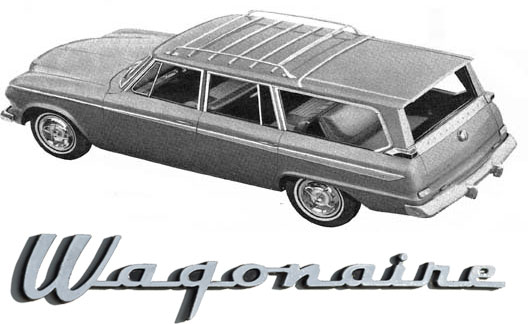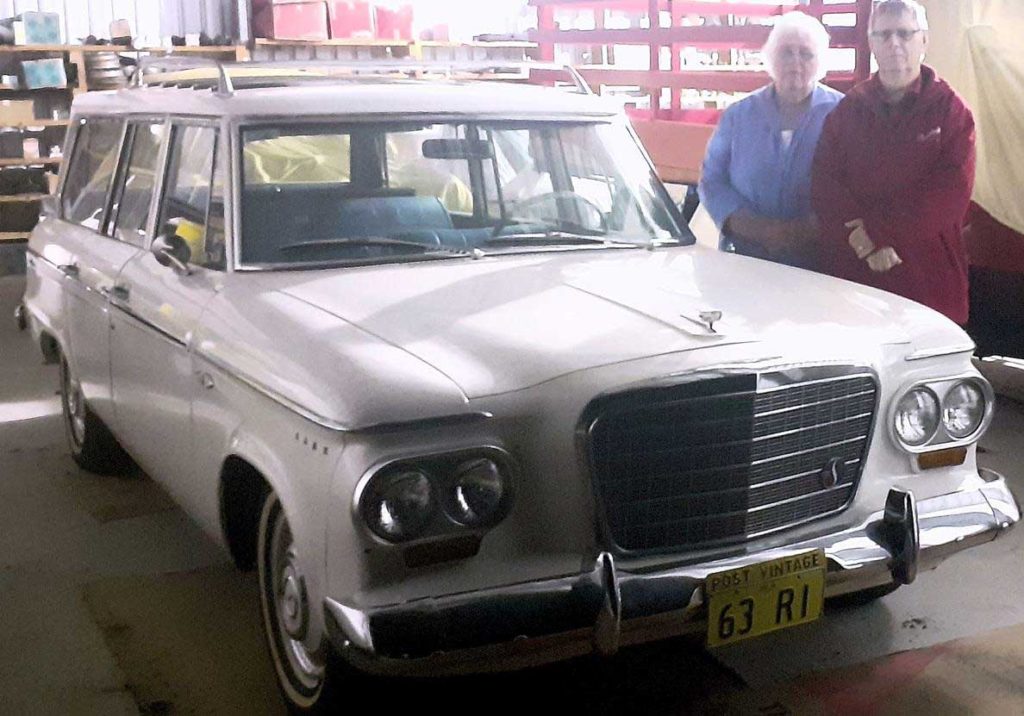An epic Studebaker story from Down Under
Who buys a thirty-five-year-old car and then, having only driven it on a couple of short trips, two weeks later puts a few tools and spare parts in it and sets off on a trip of 5,779 miles (9,300Km) consuming twenty-five days? Well, the answer to that question is Neville & Sheryl Bunker in Mount Barker, Western Australia. Here is how that came about.
Neville purchased his first car when he was only twenty years old. He was determined to find a car that was different from the run-of-the-mill vehicle usually seen in town which, at that time, was the Australian-made Holden. The Holden was a good car, but Neville wanted something different. His search ended when he spotted a brand-new 1964 Studebaker Cruiser. It was painted Moonlight Silver and sported a red interior that really stood out. Powered by a 259 cubic inch V8 engine, versus the Holden 138 cubic inch 6 cylinder, it offered plenty of power. Perfect! He knew he had found his car. The Studebaker was expensive. A new Holden would have cost £1,200.00; his Cruiser set him back a total of £1,734.00, but it was worth it. His objective of acquiring something different was accomplished; the Cruiser was soon the talk of the town. He has been buying Studebakers ever since.
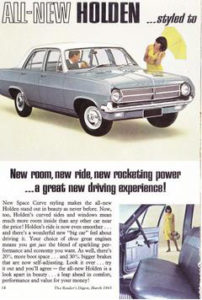 Over the next four years, Neville joined the Studebaker Car Club of Australia, completely restored a 1928 Studebaker Erskine two-door Club Sedan, and in 1966, married Sheryl. Their family grew, eventually having two daughters and a son, and Neville continued to be active in the Studebaker hobby. Western Australia, a part of the country that can have long, empty distances between population centers, is not the ideal topography for trying to form an active Studebaker club. Nevertheless, in 1973, Neville decided that Western Australia needed a chapter of The Studebaker Car Club of Australia, so he founded one.
Over the next four years, Neville joined the Studebaker Car Club of Australia, completely restored a 1928 Studebaker Erskine two-door Club Sedan, and in 1966, married Sheryl. Their family grew, eventually having two daughters and a son, and Neville continued to be active in the Studebaker hobby. Western Australia, a part of the country that can have long, empty distances between population centers, is not the ideal topography for trying to form an active Studebaker club. Nevertheless, in 1973, Neville decided that Western Australia needed a chapter of The Studebaker Car Club of Australia, so he founded one.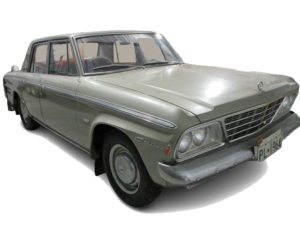
Neville understood that to be successful the club needed to be centered where the greatest number of prospective members lived. That would be the city of Perth, 264 miles from his home. Nevertheless, he still chose Perth as the club base.
Neville still owns his first Cruiser and now refers to it as the “New Cruiser.”
As President of the club, he made the 528-mile round trip from his home to Perth to attend the monthly meetings for four years. Not wanting to put the considerable mileage for traveling to and from monthly meetings on his original Cruiser, he purchased a used 1964 Cruiser. Sure enough, that Cruiser traveled over 25,000 miles while attending Studebaker club functions. In addition, Neville attended two Studebaker Car Club of Australia National Meets during that time all of these in his trusty, 1964 Cruiser.
Studebaker Car Club of Australia National Meets
 1975 in Wagga Wagga, New South Wales, a 4,214-mile round trip
1975 in Wagga Wagga, New South Wales, a 4,214-mile round trip 1977 in Adelaide, South Australia, a “short” 3,246-mile round trip
1977 in Adelaide, South Australia, a “short” 3,246-mile round tripIn 1983 he made the “easy” 528-mile round trip to Perth, which turned out to be his last National Meet for several years. It wasn’t until late in 1996 that Neville decided to attend the National Meet in Brisbane, Queensland, Australia, to be held in March of 1997. This time the round trip would mean traveling over 5,000 miles. To make the trip, he decided to completely restore a 1965 Studebaker Commander he owned.
Neville devoted the last few months of 1996 and the first couple of months of 1997 to completing the Commander. Just before he finished the Commander, a 1963 Wagonaire popped up for sale that had recently been imported from the U.S.A. Neville had seen it at earlier Studebaker Club meets; on a whim, he contacted the owner, made an offer, and found himself the proud owner of a “new” Wagonaire.
Over the years, Neville’s wife, Sheryl, had become accustomed to a “new” Studebaker showing up at their house unexpectedly, so when the Wagonaire arrived, it wasn’t much of a surprise. The Wagonaire became the errand vehicle for making a few short trips while finishing the restoration of the Commander. It proved to be both reliable and just plain fun to drive.
A few weeks before his planned departure date, that newly acquired 1963 Daytona Wagonaire just kept pulling at him to take it to the Nationals. After all, it was quite unique, with a Jet Thrust engine, a four-speed manual transmission, and the rare third seat in the rear. (He would later discover that he had the only 1963 Wagonaire equipped with an R1 engine at the time it left the factory. Ed.) True, he had not taken any long trips in the Wagonaire, but it had performed well every time. Still, making the drive to Brisbane in a newly acquired thirty-four-year-old car could be an invitation for trouble.
With only days remaining before it was necessary to leave for Brisbane, it was decided that the Wagonaire would be the one to go. Neville had been a Studebaker owner and driver for over thirty years at that time. His confidence in both the Studebaker automobile and his own ability to deal with any mechanical problem he might encounter just made that trip sound totally doable.
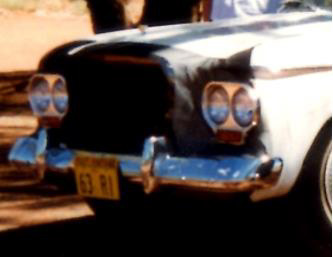 In getting ready for the trip, Neville fashioned a “Bug Screen” out of flywire nylon mesh. The mesh didn’t scratch the paint, but it did protect the front of the car and the radiator from the expected bug splats. Remember, this is Australia, where it is summer in March. Keeping the radiator clear is important when driving long hours in hot summer weather. That complete, the Wagonaire was quickly serviced, a few spare parts and tools were loaded up just in case, and it was pronounced ready to go.
In getting ready for the trip, Neville fashioned a “Bug Screen” out of flywire nylon mesh. The mesh didn’t scratch the paint, but it did protect the front of the car and the radiator from the expected bug splats. Remember, this is Australia, where it is summer in March. Keeping the radiator clear is important when driving long hours in hot summer weather. That complete, the Wagonaire was quickly serviced, a few spare parts and tools were loaded up just in case, and it was pronounced ready to go.
To help those of us who live in the U.S.A. to put that drive in perspective, it would be like deciding to drive from New York City, New York, to Los Angeles, California, except that the trip in Australia has many more long, empty stretches to cover.


Driving 2,680-miles, one way, takes a lot of faith in a newly acquired classic car!
On the morning of March 17, 1997, Neville and Sheryl headed out for Brisbane in their Wagonaire, which was licensed for driving only during daylight hours. Their first destination was Norseman, a little less than 400 miles away.
From Norseman they faced the Eyre Highway across the Nullarbor Plain, over 980 miles of straight highway. “Nullarbor” means “treeless,” and it lives up to its name. While it has no trees, it is covered with bluebush, mulga scrub, and should you be lucky enough to travel shortly after a rare rain, even wildflowers. You might also see wild camels, kangaroos, dingoes, emus, and wedge-tailed eagles along the way.
Despite the daylight limitation on their driving, they covered over 1,100 miles, almost half of the trip, in the first two days. Seven more days and 1,599 more miles and they arrived at Brisbane on the afternoon of March 26, 1997. Neville said, “Arriving in Brisbane with 2,699 miles behind us, we were glad to get off the road!” I’m guessing that is a bit of an understatement.
The National Meet lasted four days, during which time Neville and Sheryl managed to renew old Studebaker friendships from Australia, New Zealand, and the U.S.A., while making some new ones. Of course, the Wagonaire was a big hit, as you would expect. In addition to being the only 1963 Wagonaire equipped with the Jet Thrust R1 engine package shipped from the factory, it also is loaded with other options. It has a four-speed standard transmission, disk brakes on the front, power brakes, dual horns, heavy-duty springs front and rear, tinted Windshield, an electric window in the tailgate, tailgate step, rear wing, front wing, wheel hubcaps, luggage rack, captive air white wall tires, backup lights and undercoating. Of course, it also has that sliding back roof that makes the Wagonaire such an unusual vehicle in the first place.
On the inside, it has the optional tachometer, a push-button AM radio, air conditioning, split individual reclining front seats, seat belts in front, climatizer, and the rare Hideaway third seat option in the back.
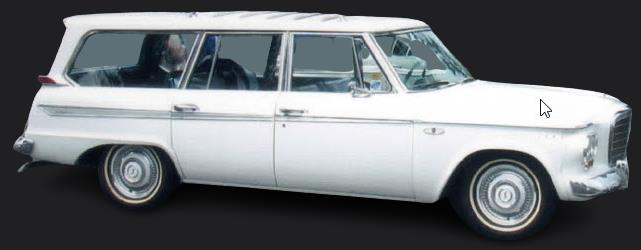

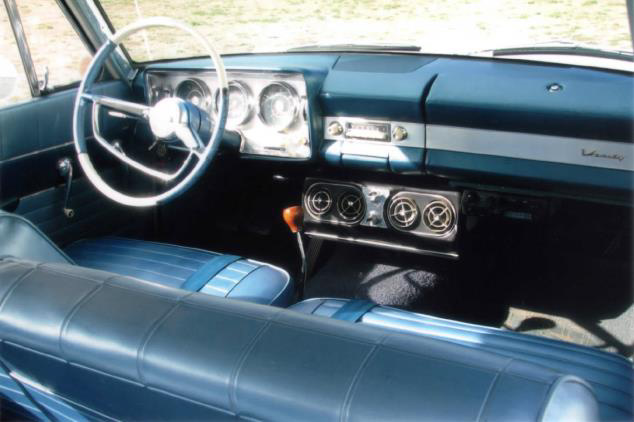
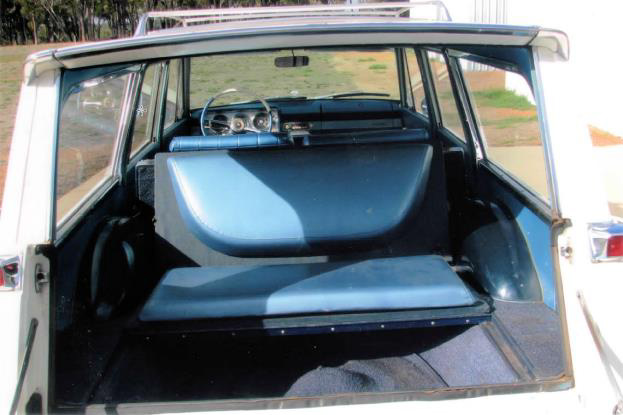 Rare Hideaway third seat
Rare Hideaway third seat Optional tachometer
Optional tachometer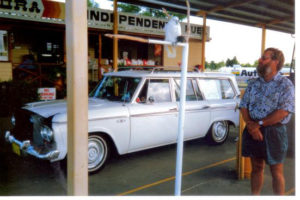 With the meet over, it was time to prepare to head home. While fueling up to leave, Neville took time for a short conversation with a local cockatoo. The return trip would be a little longer. Because they had never seen the Murray River, the longest river in Australia, they chose a more southerly route.
With the meet over, it was time to prepare to head home. While fueling up to leave, Neville took time for a short conversation with a local cockatoo. The return trip would be a little longer. Because they had never seen the Murray River, the longest river in Australia, they chose a more southerly route.
The Murray River stretches over 1,500 miles. With over 1,200 miles of navigable water, it is the third longest navigable river on Earth. Only the Amazon and Nile rivers have longer stretches of navigable water.
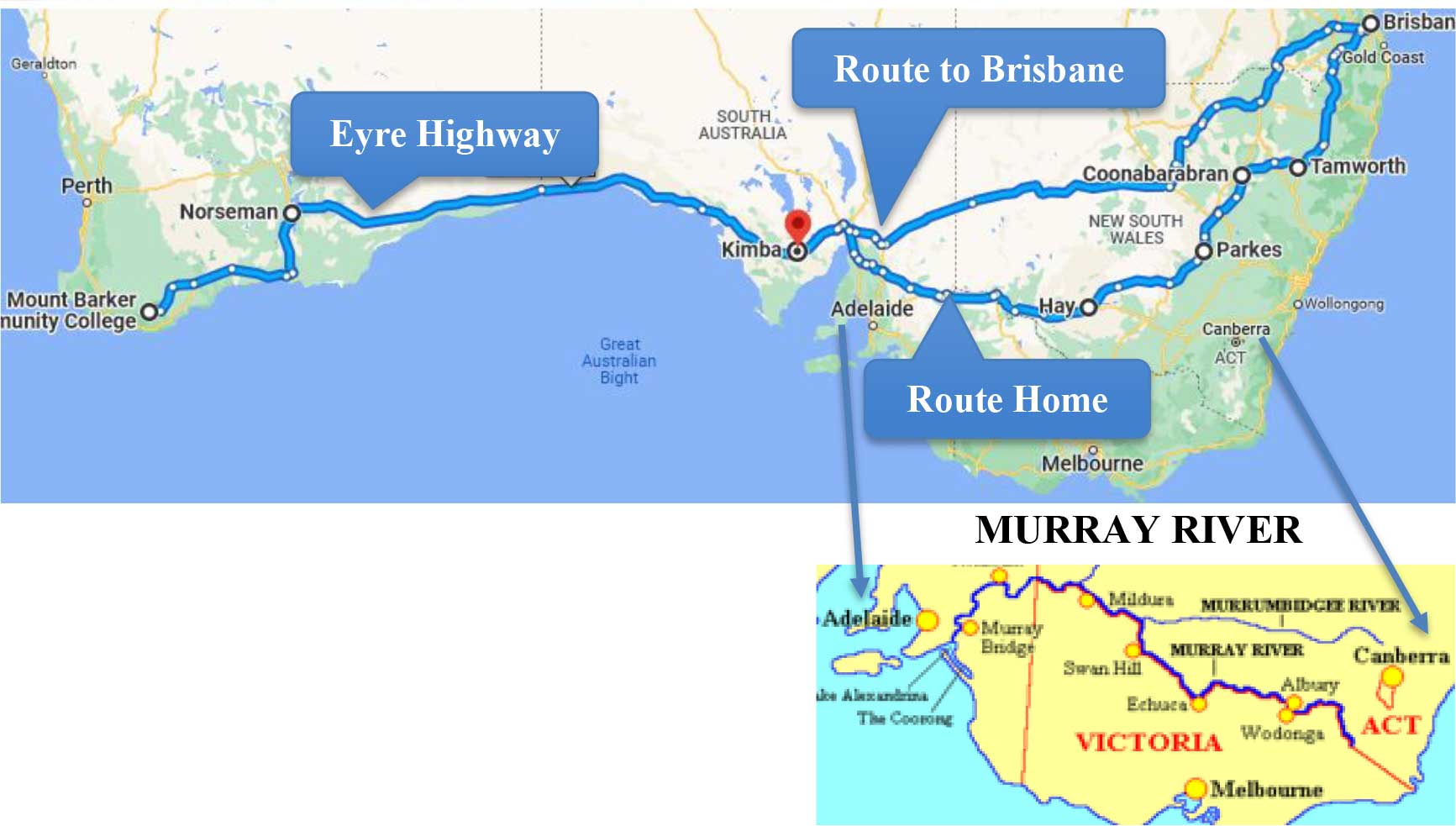
Exploring the Murray, the Bunkers crossed on a barge and were lucky enough to see the paddleboat Rothbury while in Mildura. The Rothbury was built in 1881 at Gunbower, Victoria, also on the Murray River. As a large and powerful tow boat, it is employed in towing barges on the river for the wool and logging trade. It is also famous as “The Greyhound of the Murray,” a champion of towing racing. While she lost her first race in 1896 due to a mistake caused by her engineer, and she didn’t get a chance to regain her honor until the Bicentennial Great Paddleboat Race in 1988, she has won the last four National Paddleboat Challenge Cup races and currently holds that title.
 Crossing the Murray River on a Barge
Crossing the Murray River on a Barge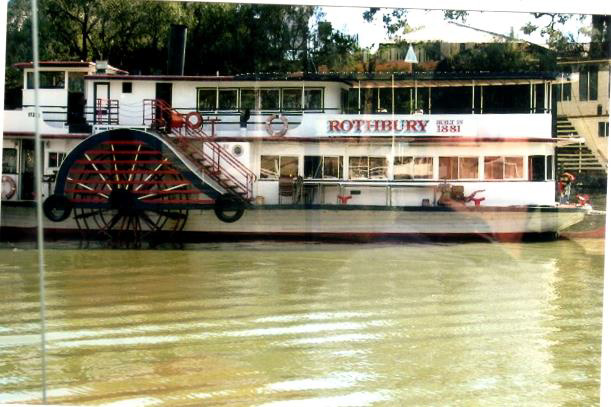 Paddleboat Rothbury on the Murray River
Paddleboat Rothbury on the Murray River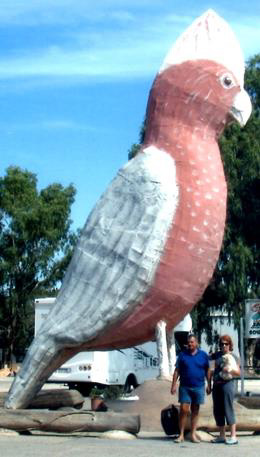 On day eight of the return trip, they arrived at Kimba, a pioneering town established in 1915, where they visited with the Big Galah Cockatoo (26 feet tall). The name Kimba comes from an Aboriginal word meaning “Bush Fire.” Kimba is located at the exact geographical halfway point across Australia between Sydney and Perth. It was here they once again returned to the Eyre Highway across the Nullarbor Plain (that treeless plain) and along the coastline of the Great Australian Bight, which is dominated by cliffs up to 200 feet high. (I had to get the definition of “bight” from Merriam-Webster: \ ˈbīt \a bend in a coast forming an open bay; also: a bay formed by such a bend.)
On day eight of the return trip, they arrived at Kimba, a pioneering town established in 1915, where they visited with the Big Galah Cockatoo (26 feet tall). The name Kimba comes from an Aboriginal word meaning “Bush Fire.” Kimba is located at the exact geographical halfway point across Australia between Sydney and Perth. It was here they once again returned to the Eyre Highway across the Nullarbor Plain (that treeless plain) and along the coastline of the Great Australian Bight, which is dominated by cliffs up to 200 feet high. (I had to get the definition of “bight” from Merriam-Webster: \ ˈbīt \a bend in a coast forming an open bay; also: a bay formed by such a bend.)
If you have the time, the Bight offers many opportunities to go whale-watching from some of the cliff tops during the southern hemisphere winter. Another unique opportunity offered by the Eyre Highway is a chance to play the world’s longest golf course. With only six holes, it is an amazing 848 miles long. Each town or roadhouse along the way has a hole. Obviously, there is plenty of open road between stops. It is suggested that you drive your car rather than your golf ball between holes!

After 12 days on the return trip, 5,779 total miles, and 336 gallons of fuel burned while averaging 17.6 miles per gallon, they were home.
AND NOT A SPANNER WAS USED!

ADDENDUM
The years roll on and Neville has continued to be active in the Studebaker hobby and attending national meetings when possible. In 2004 he flew to Christchurch, New Zealand to attend the national being held there and again in 2011 he drove his 1963 Studebaker Transtar Dually to the national in Perth.“
NO MORE NATIONAL MEETS AFTER 2011.
JUST GIVE THE CARS A GOOD LONG DRIVE.
In 2010, health issues required that he give up farming and the land was sold. He still has a few acres on which he has built a 500 square meter shed to hold his Studebakers.
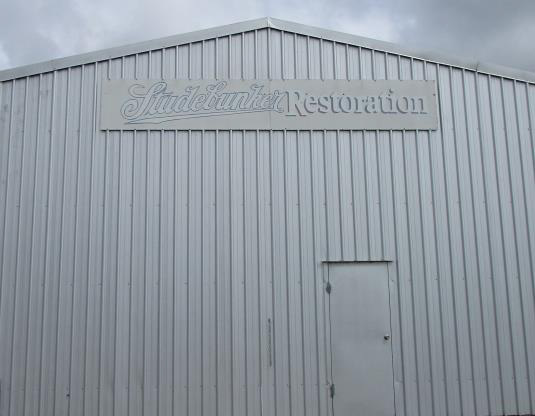 The sign in this picture is difficult to read but it says Studebunker Restoration
The sign in this picture is difficult to read but it says Studebunker Restoration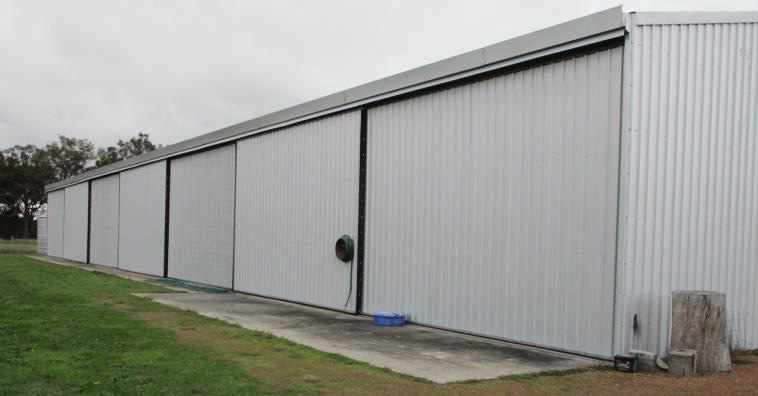
He still has the 1963 Wagonaire 24 years later, along with the following Studebakers:
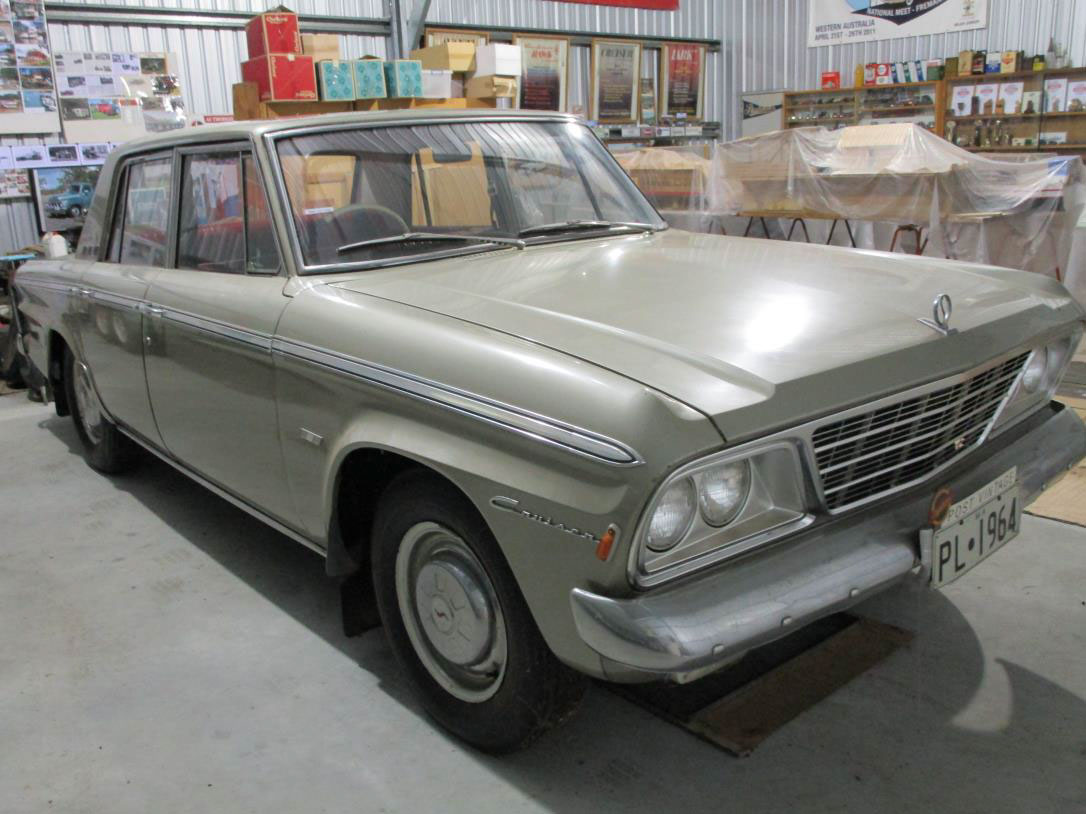
The 1965 Cruiser he purchased new 57 years ago
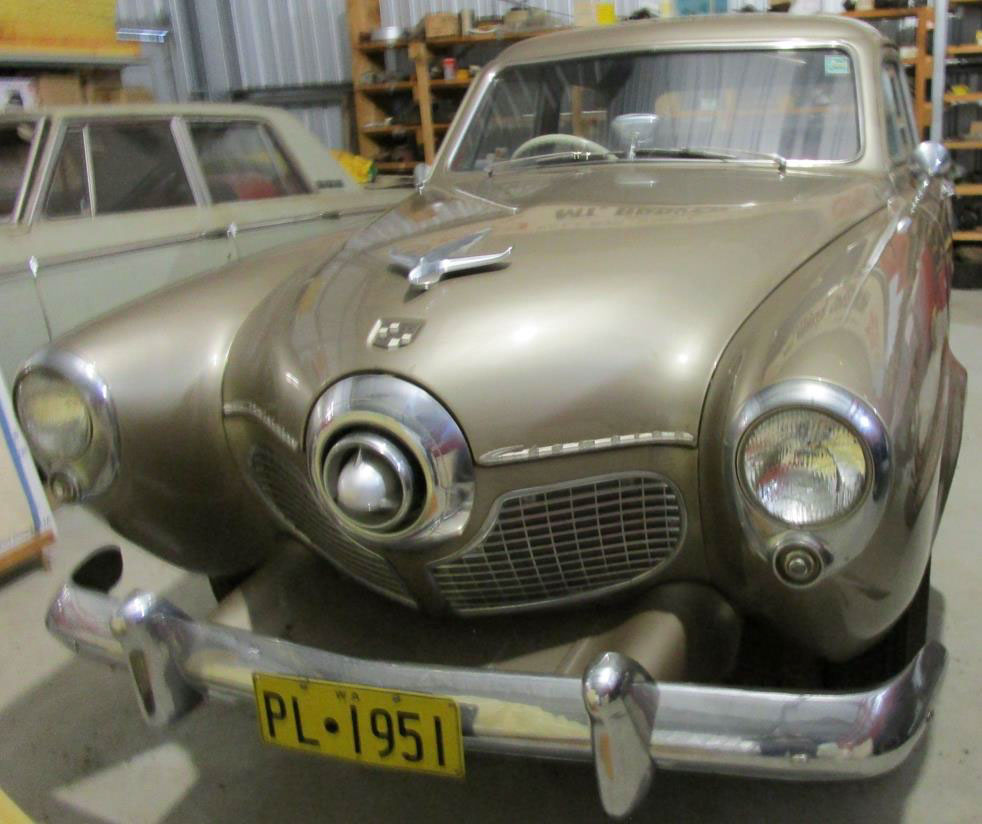
1951 Champion 4 Door
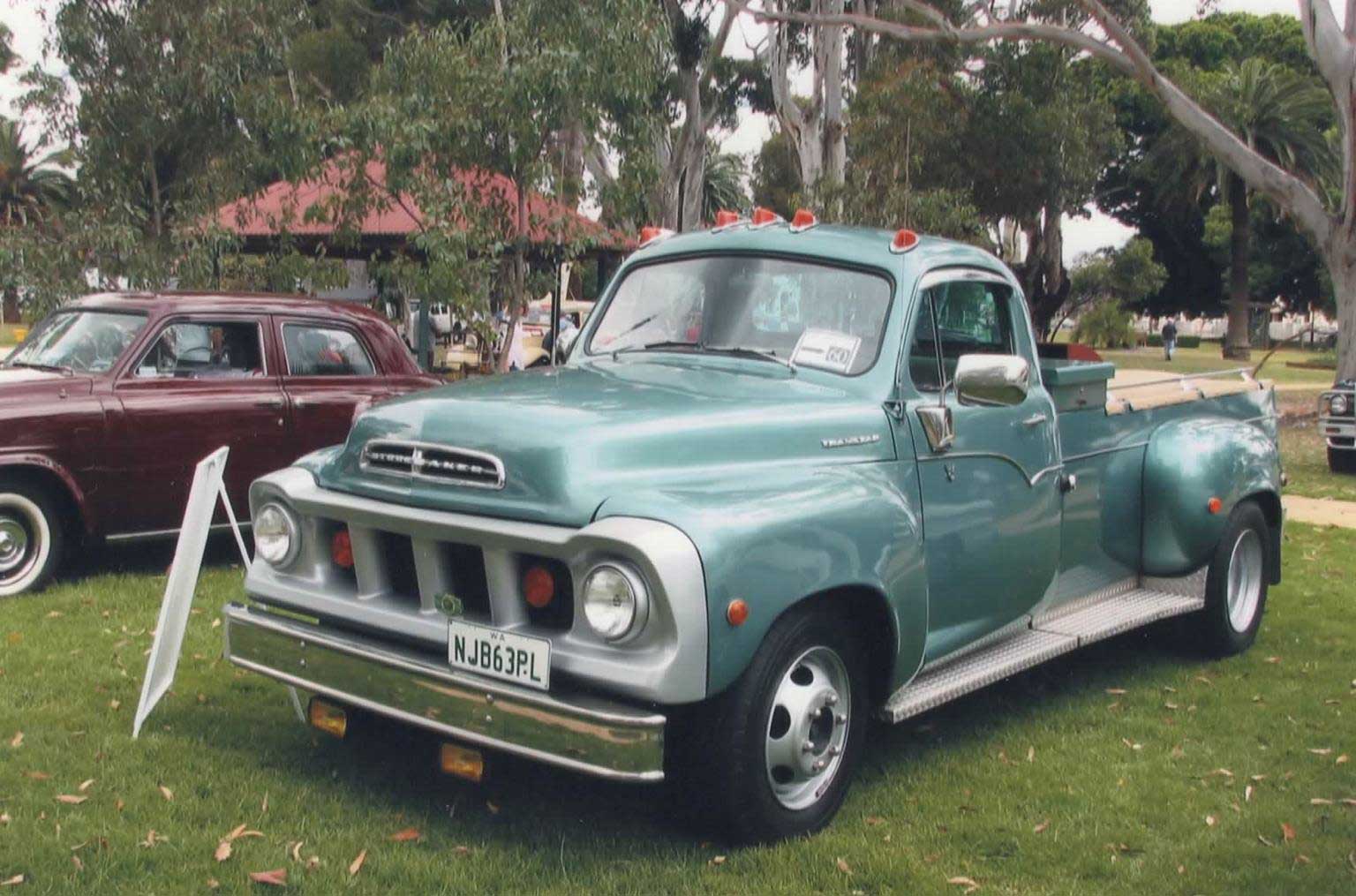
1952 2R5 pickup
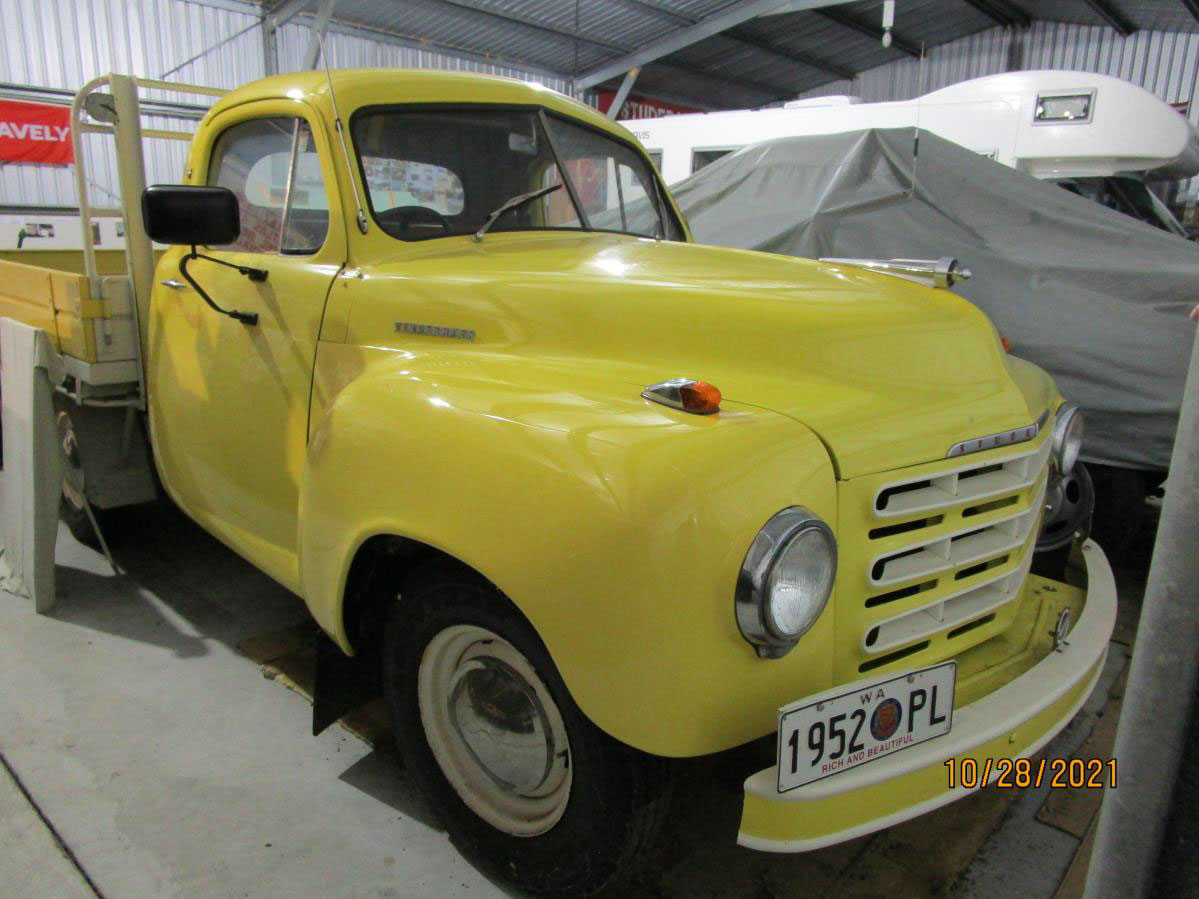
1963 Transtar dually (left-hand drive)
All of the above have been restored. He also has…
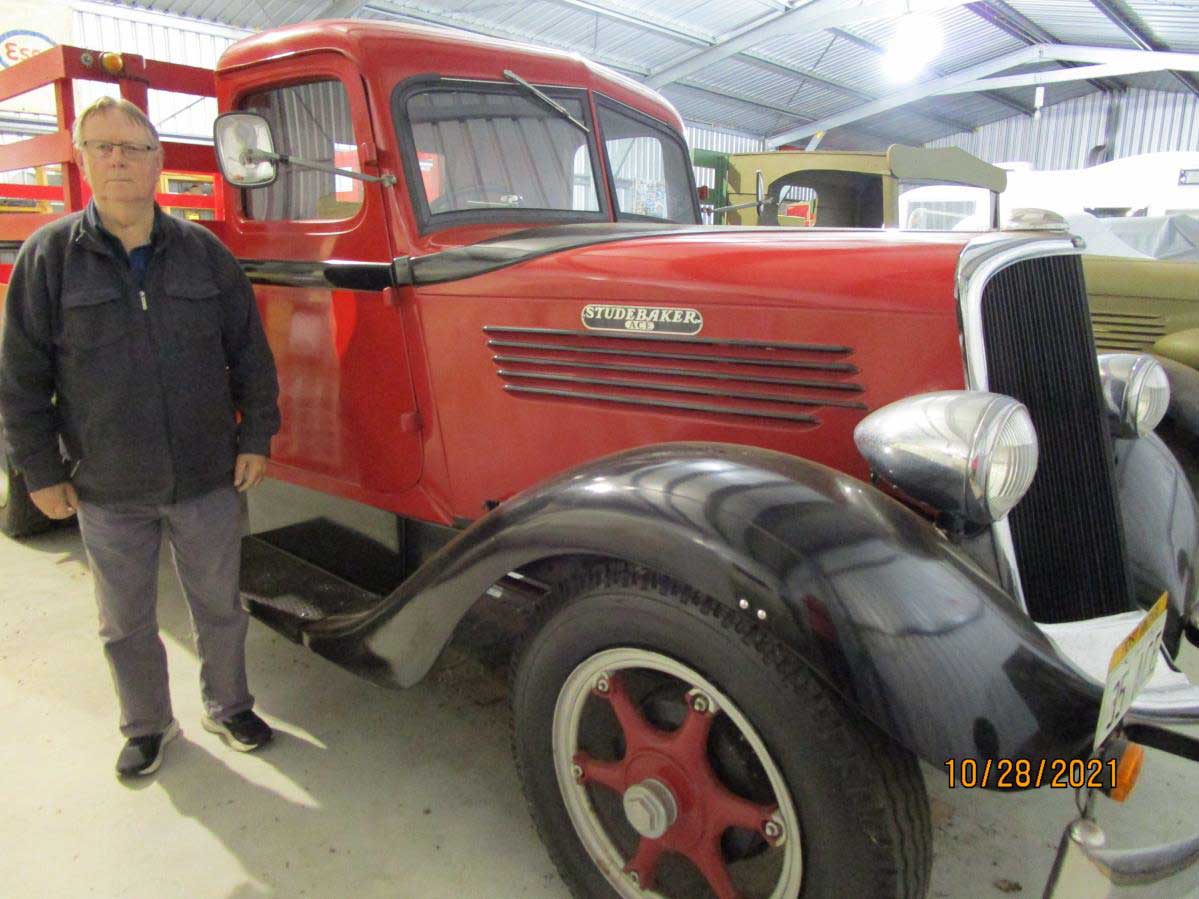
1935 Studebaker ACE (a second, unrestored original one is also housed in his barn)
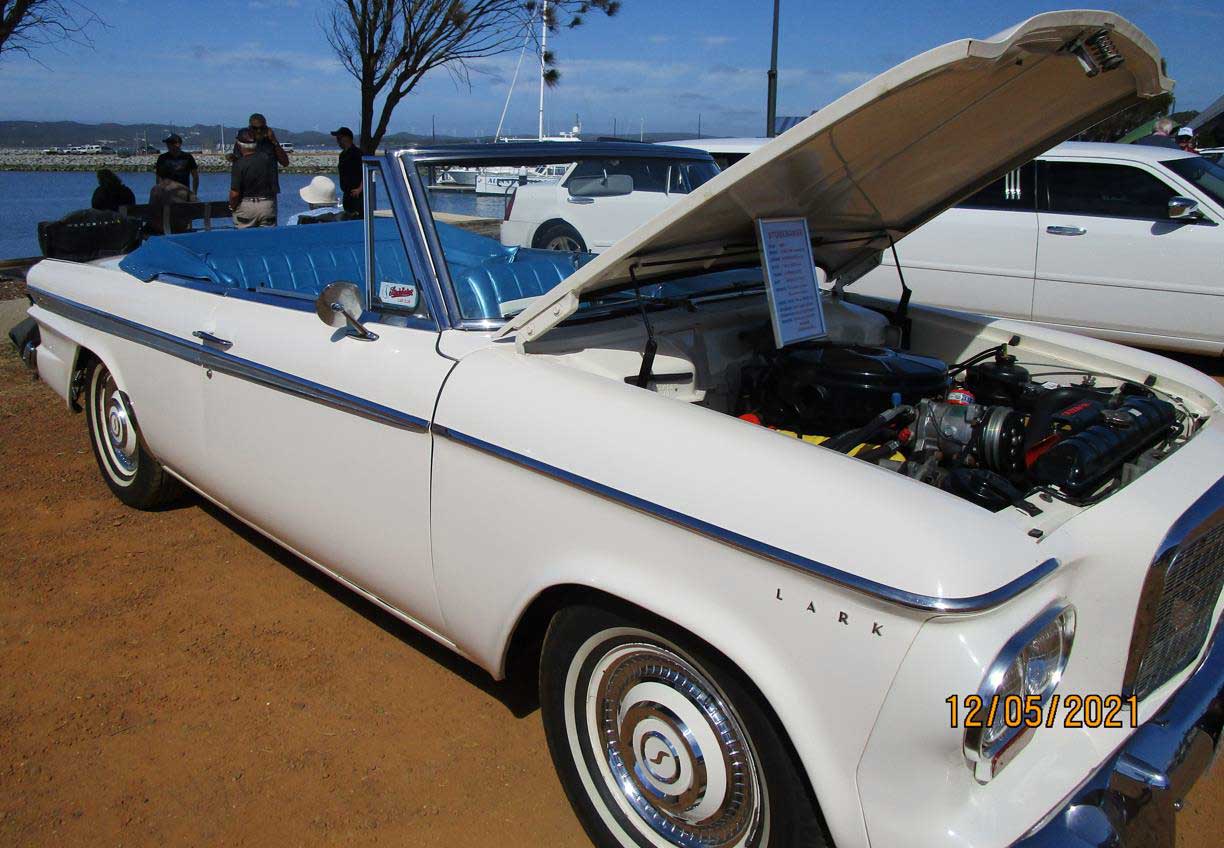
The most recent addition: a fully restored 1963 Daytona Convertible
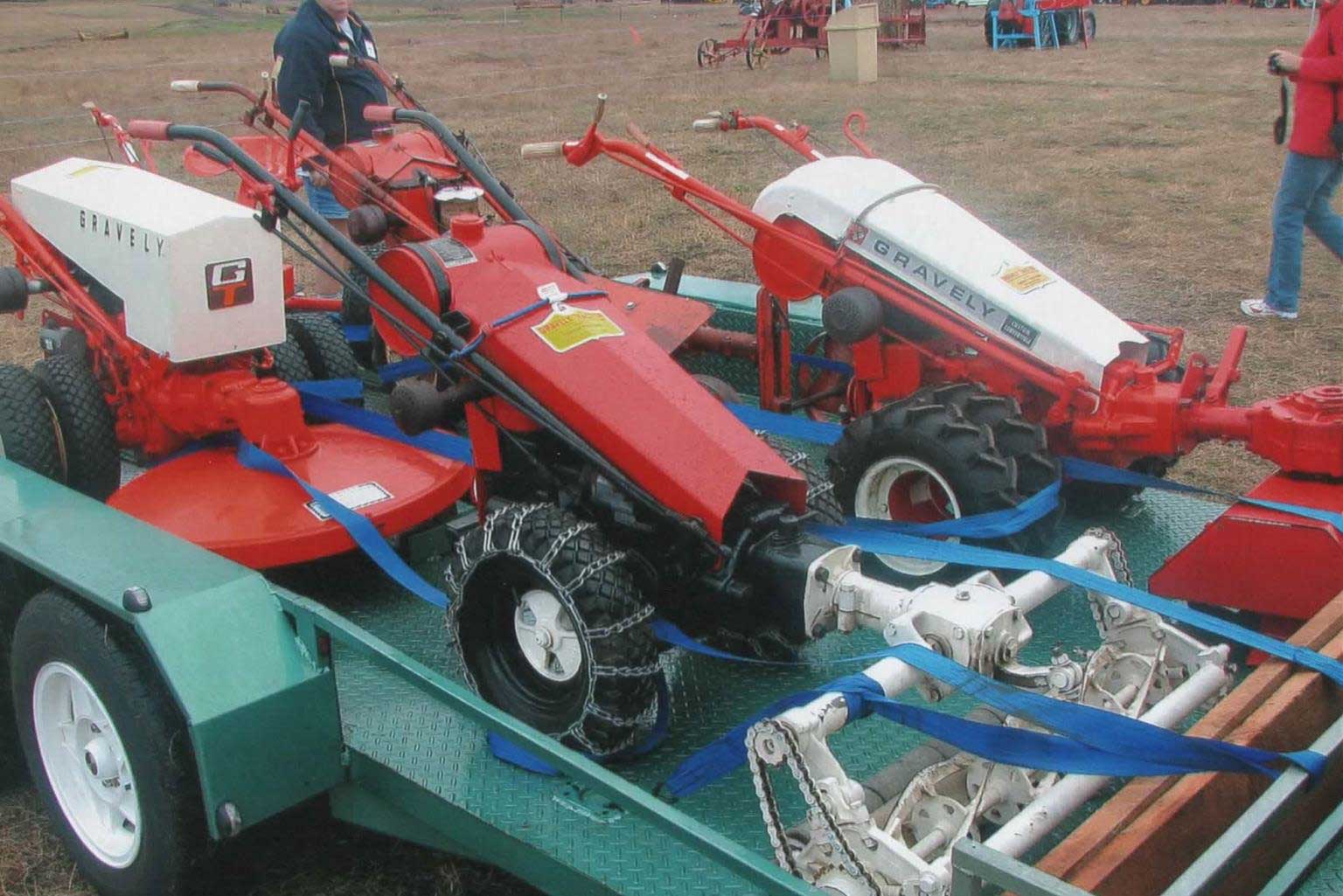
A slightly different sort of Studebaker: eight restored models of Gravely Tractors ranging from 1961 to 1968, along with a new 2011model.
The Wagonaire continues to be a favorite and now has 123,340 miles on it. You can still just fuel it up and go anywhere in it, since it has been carefully maintained over the years. In the year 2000, Neville joined the Jet Thrust Owners Roster to learn a little more about his unusual R1 four-speed transmission Wagonaire. He contacted Jim Pepper, who was kind enough to do a little research in the list of 1963 JT/JTS cars produced. He found that there were about 60 Avanti-powered Wagonaires produced that year, 44 of which were R1 powered. As to the model of Wagonaire with the R1 engine, it showed only one Daytona, two Regals, and forty-one that did not specify the model.
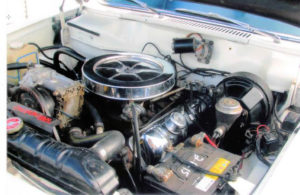 Jim also sent Neville the list of all Jet Thrust Studebaker Production in 1963, which apparently had been obtained from George Krem. A careful inspection of all 25 pages of that list showed only one Daytona Wagonaire R1. It was listed as serial number 63V16481 with engine number 1527; it was Neville’s Wagonaire.
Jim also sent Neville the list of all Jet Thrust Studebaker Production in 1963, which apparently had been obtained from George Krem. A careful inspection of all 25 pages of that list showed only one Daytona Wagonaire R1. It was listed as serial number 63V16481 with engine number 1527; it was Neville’s Wagonaire.
Neville has made an effort to find out if there are any other original surviving 1963 Daytona Wagonaire R1 owners. He has the only Daytona Wagonaire R1 owned by any member of the Studebaker Car Club of Australia. However, there were 43 other R1 Wagonaires on the 1963 Jet Thrust production list. How many, if any, originals still survive? He has contacted Terry Farmer, host of the Lark Registry, and me, as host of the Wagonaire Registry, but we do not have any Wagonaires listed with that specific build. If any readers out there own a 1963 Wagonaire with an R1 engine from the factory, please let us know. You can go to the Contact Us page to let us hear from you.
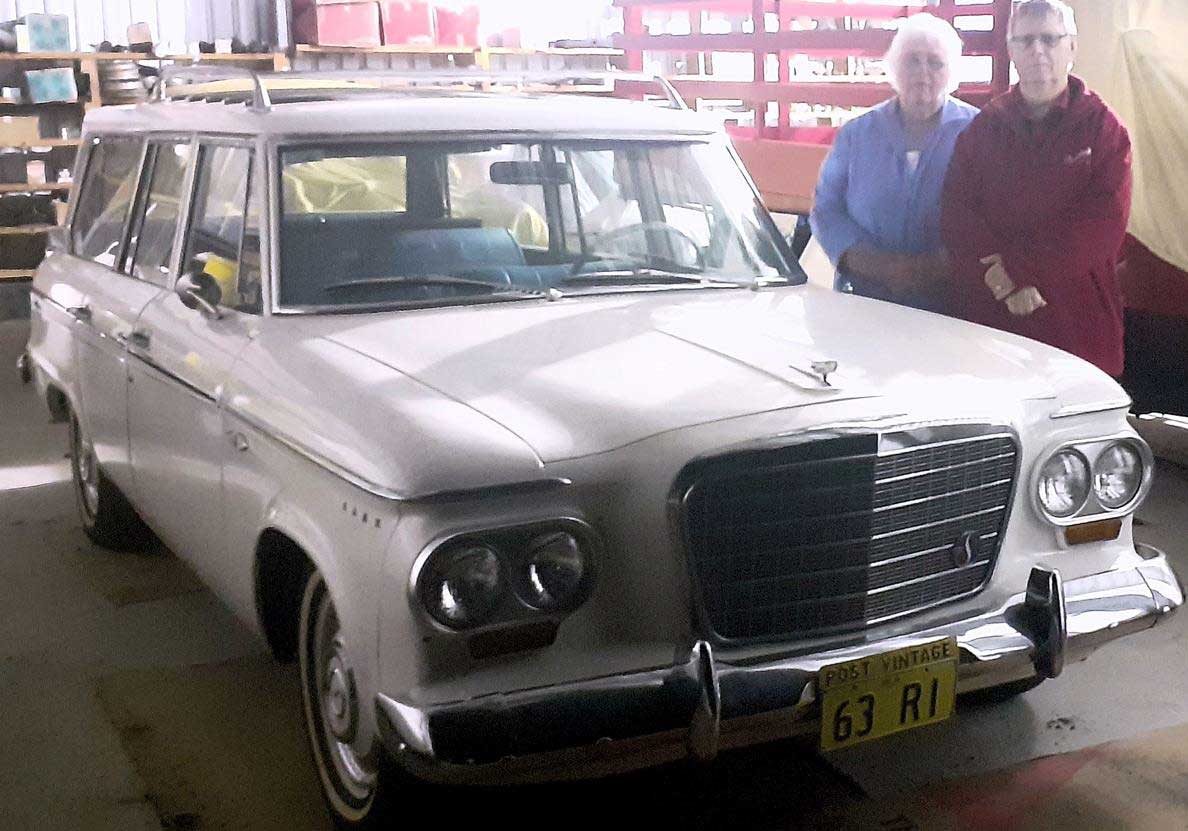
Neville & Sheryl Bunker
As you can see from the pictures of Neville’s Wagonaire used in this article, it is an outstanding example of an original car that has been well taken care of, but used, for the last 59 years! (Check out the license plate!)
